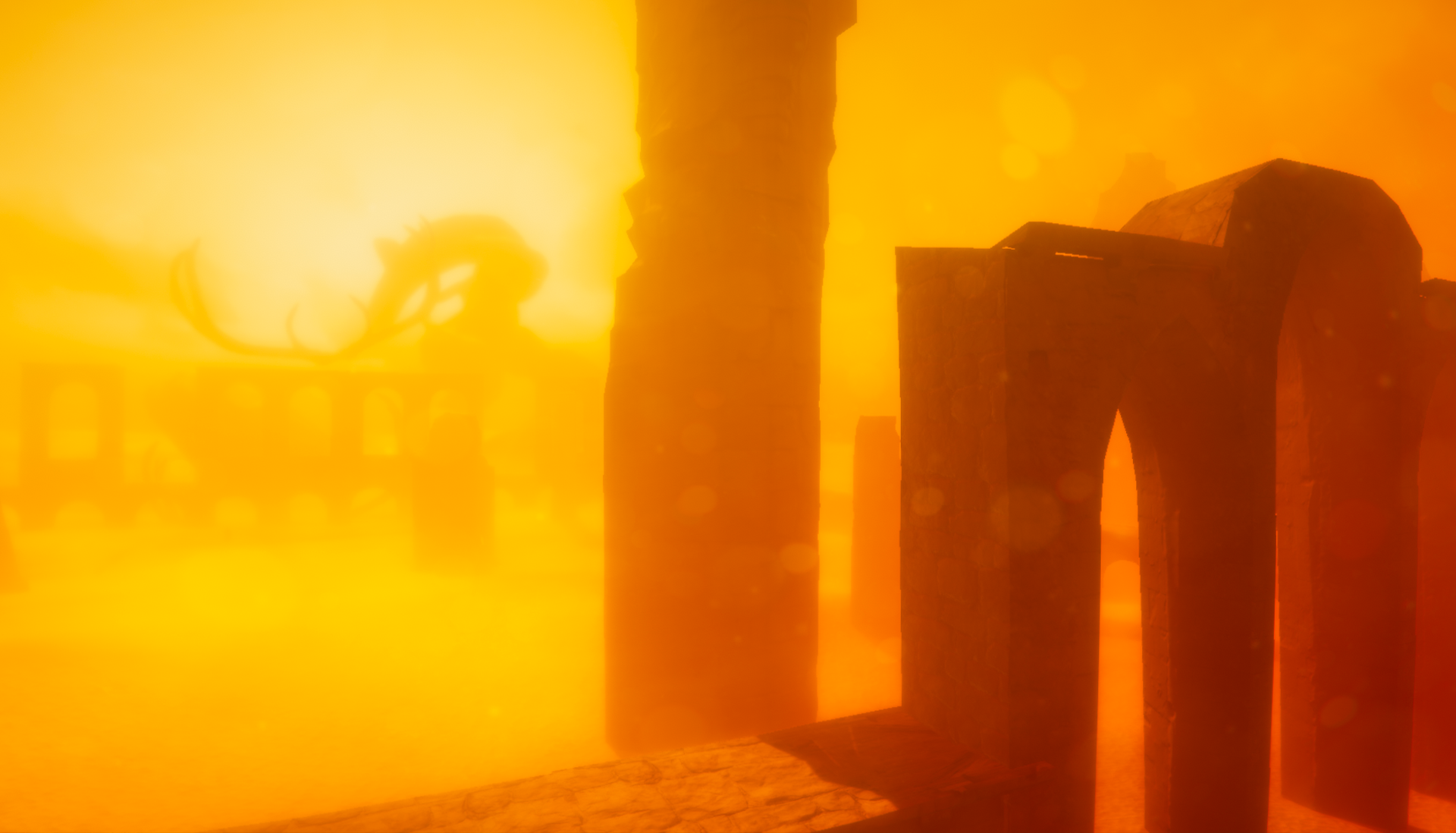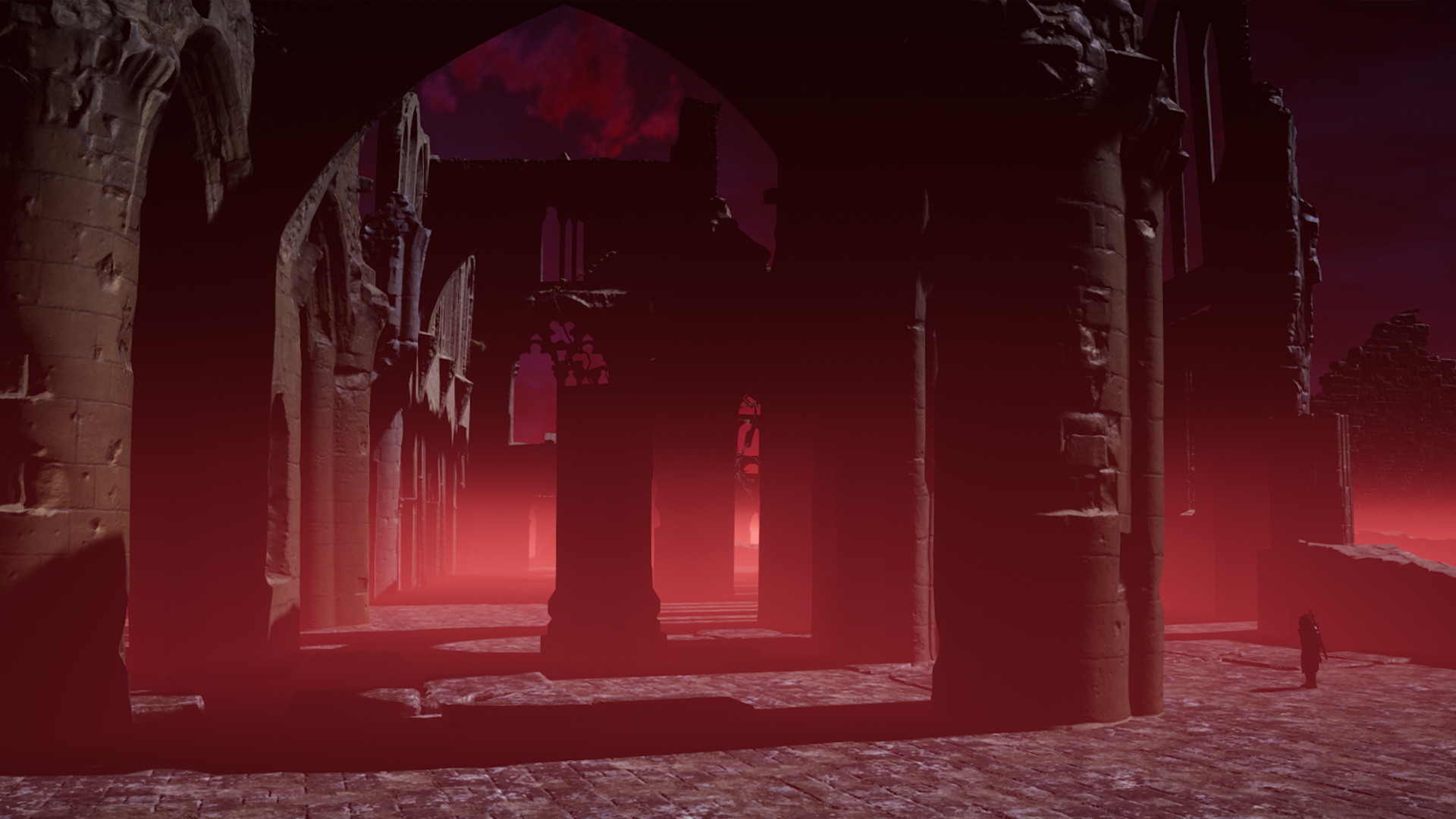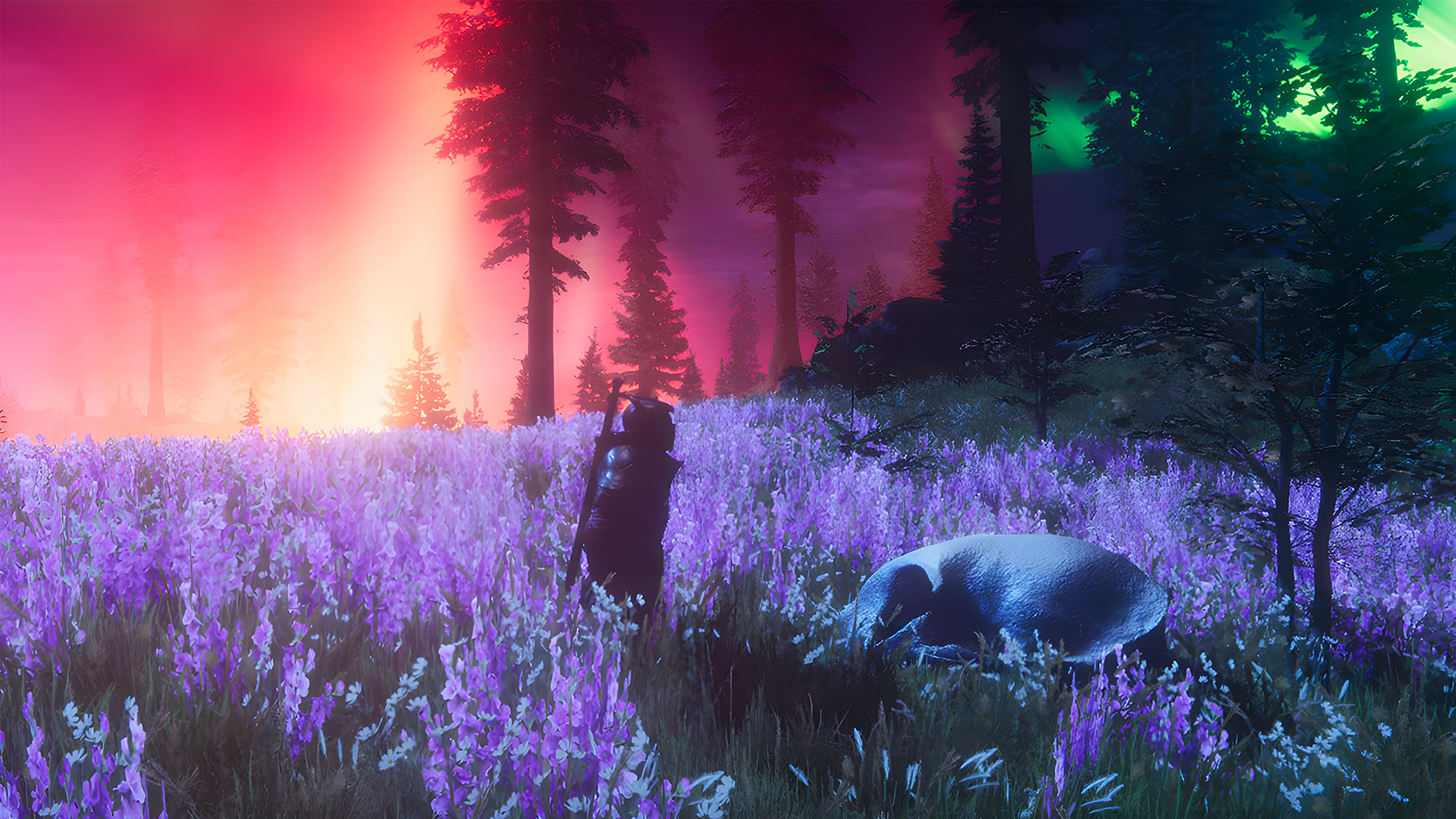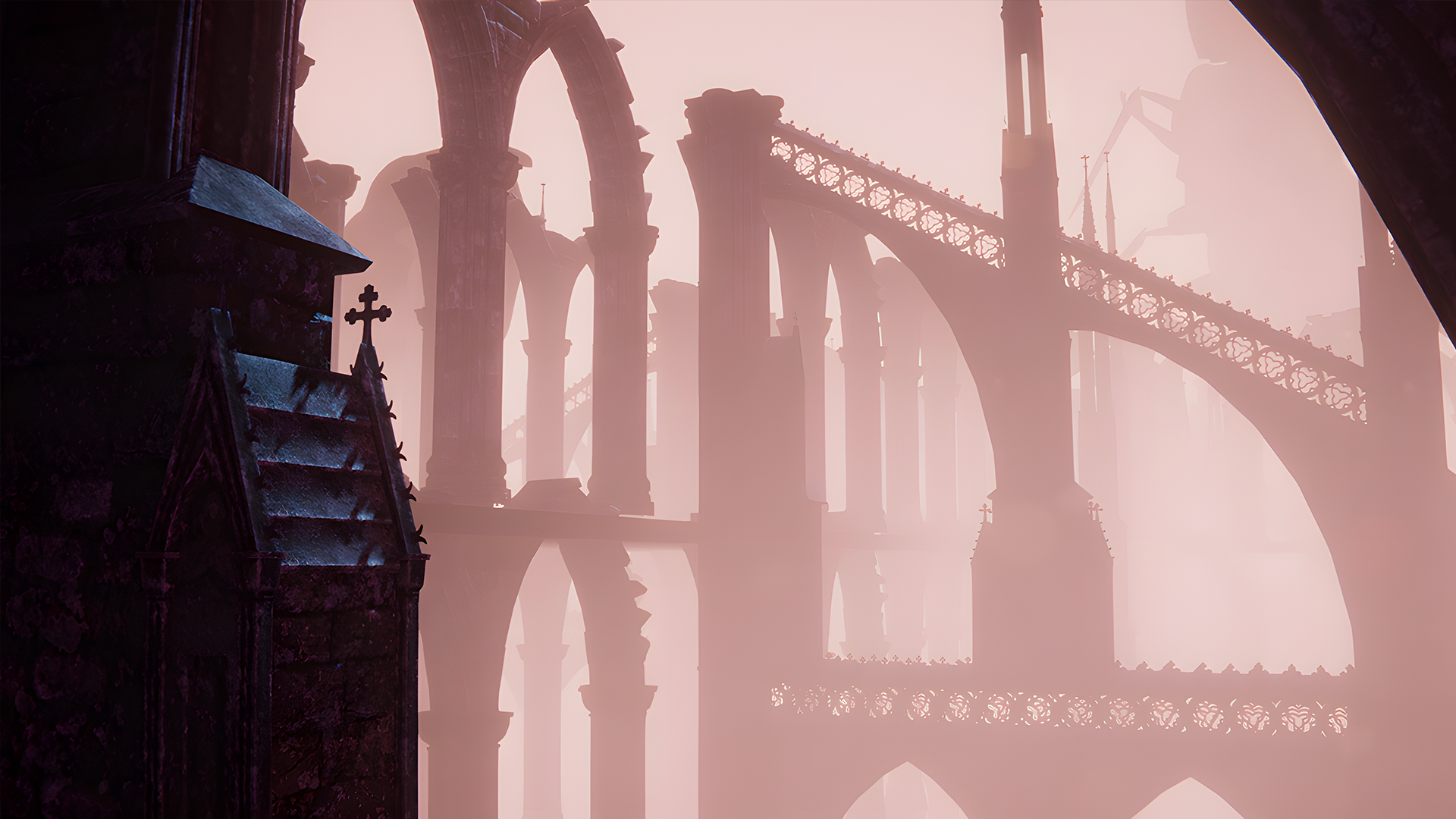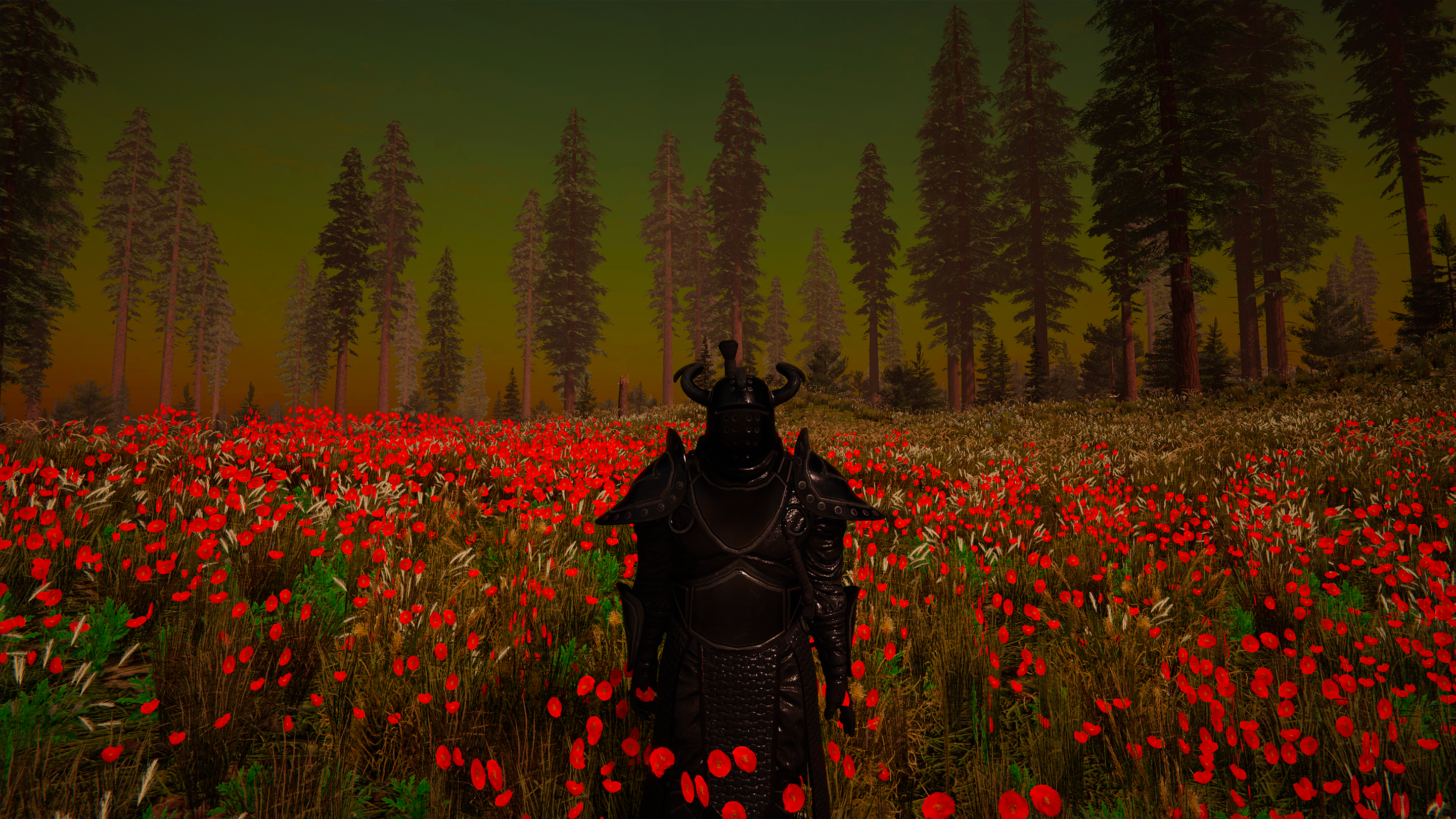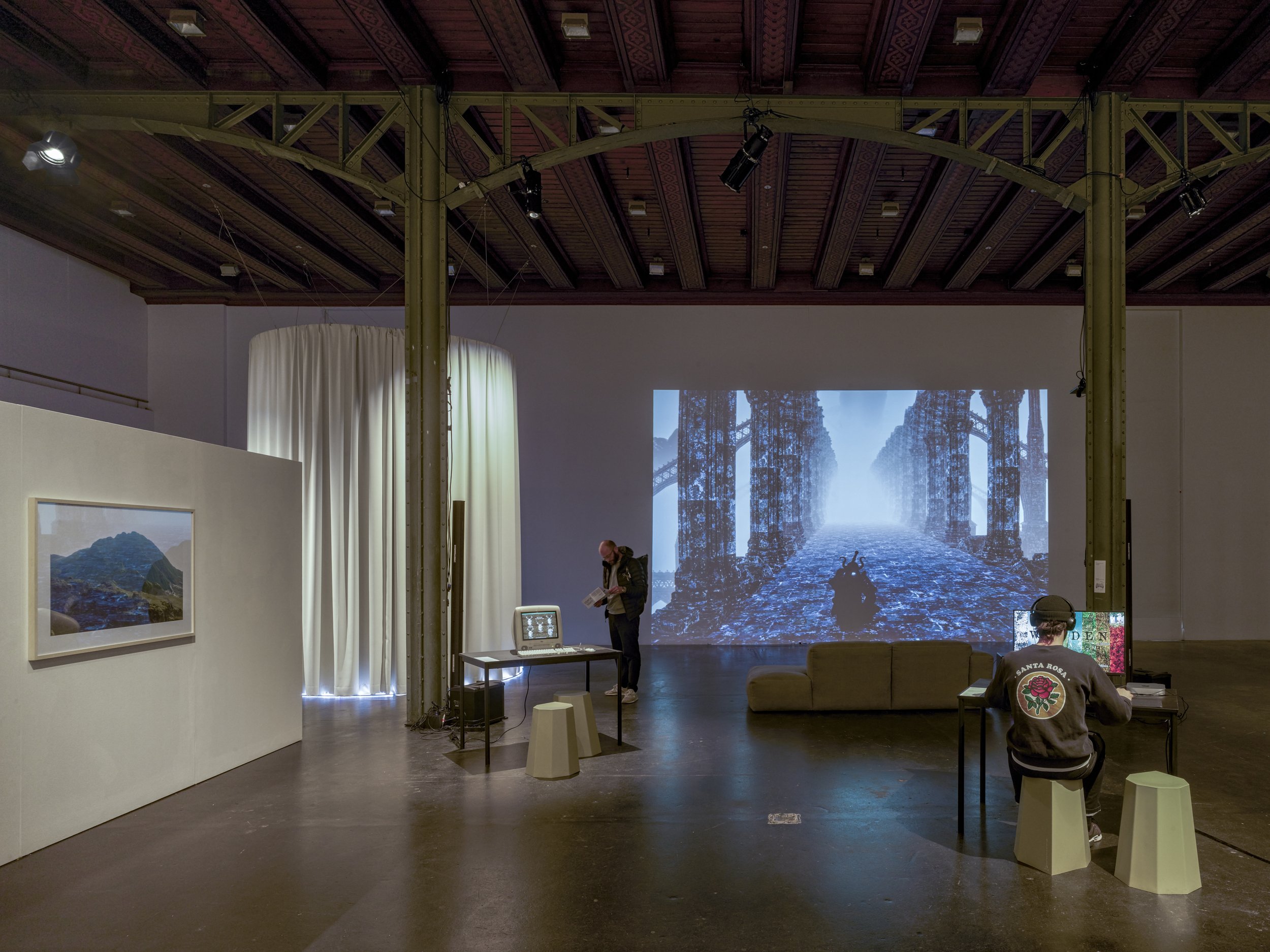Virtual reality, 6DoF, 10’
YEAR 2022
ART DIRECTION, PRODUCTION, DEVELOPMENT Mélanie Courtinat
ORIGINAL MUSIC Yatoni
INTERNATIONAL DISTRIBUTION Diversion
Certain historical events defy representation; they offer no analogies, no precedents in experience. These are catastrophes of a new kind, for which our eyes, our ears, and even our language remain unprepared.
Through the story of a survivor who chose not to evacuate her home, All Unsaved Progress Will Be Lost is a sensorial journey that explores our deepest fears and resilience in the face of unimaginable horrors. Voluntarily confined to a space rendered inhospitable, she recounts her vision of the disaster in a surreal landscape made of concrete and fog, a portrayal of a land where no return to origin is possible.
As the calamity remains undisclosed till the final moments, the looming threat remains silent and unnamed, pushing the viewers to confront their own anxieties about possible future catastrophes.
After premiering in 2022 at the Venice Biennale as part of the Immersive Selection, the project went on to be presented at over twenty exhibitions and festivals worldwide. That same year, it received the Best VR Award at Animafest Zagreb.
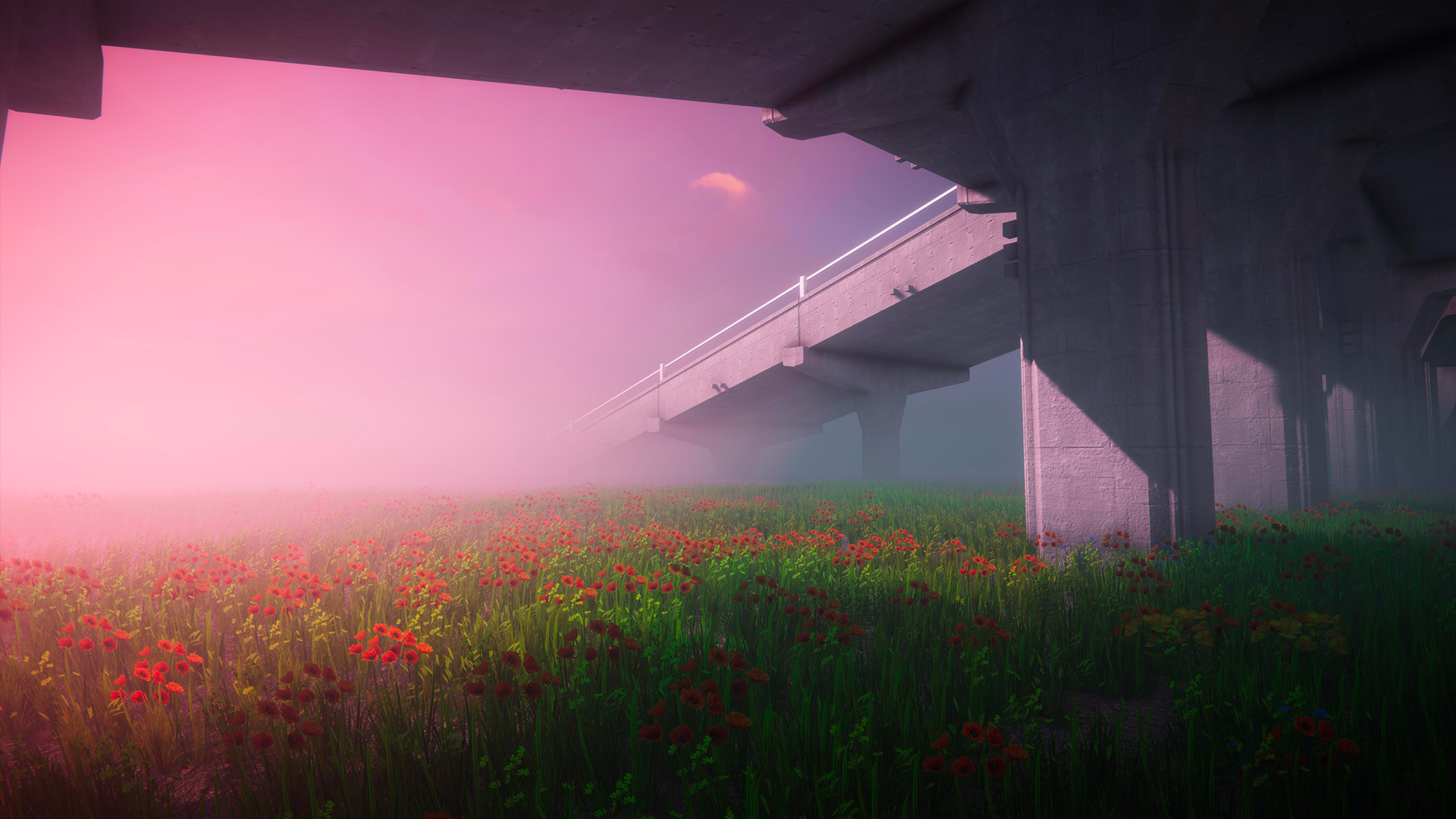
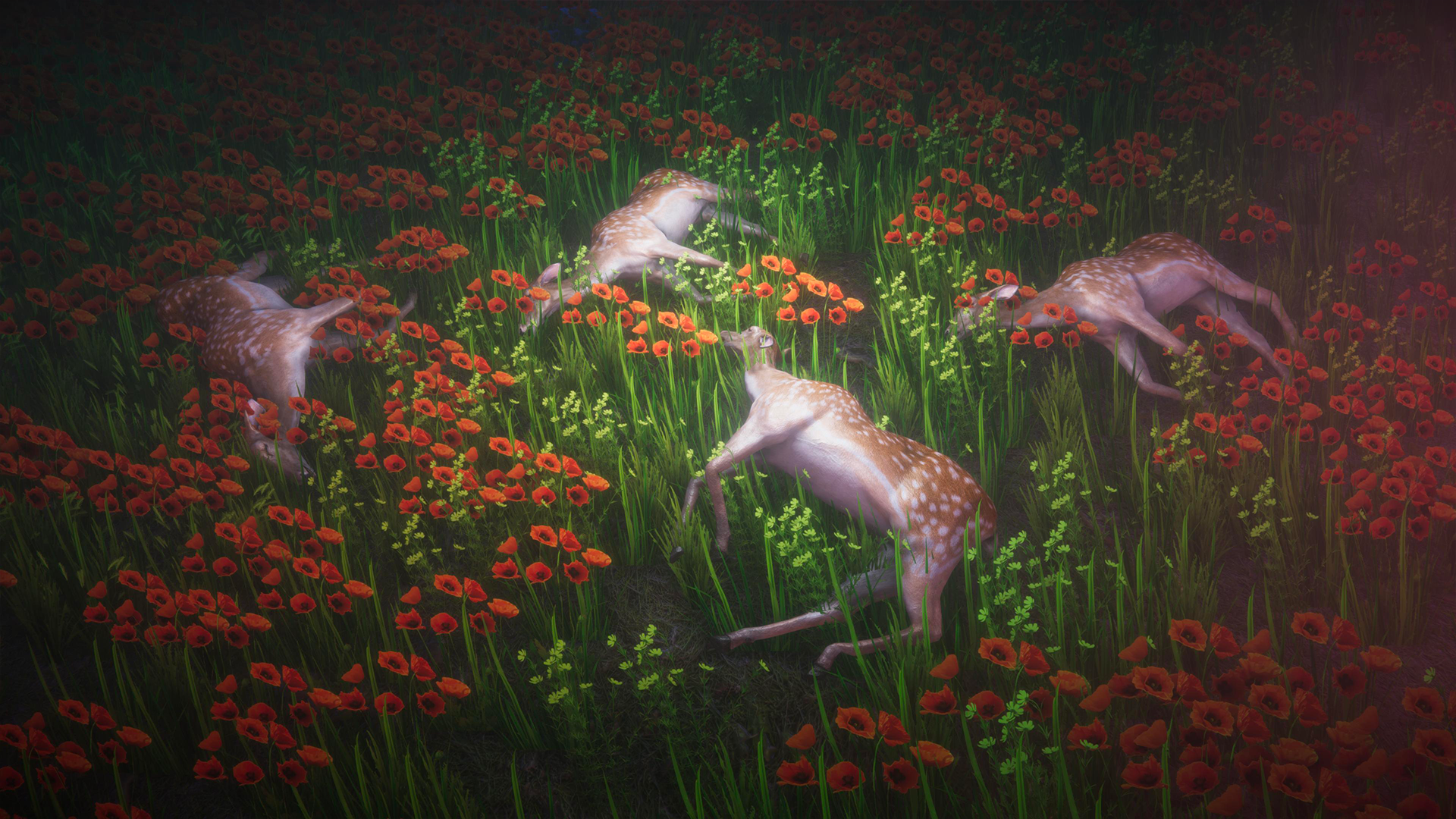
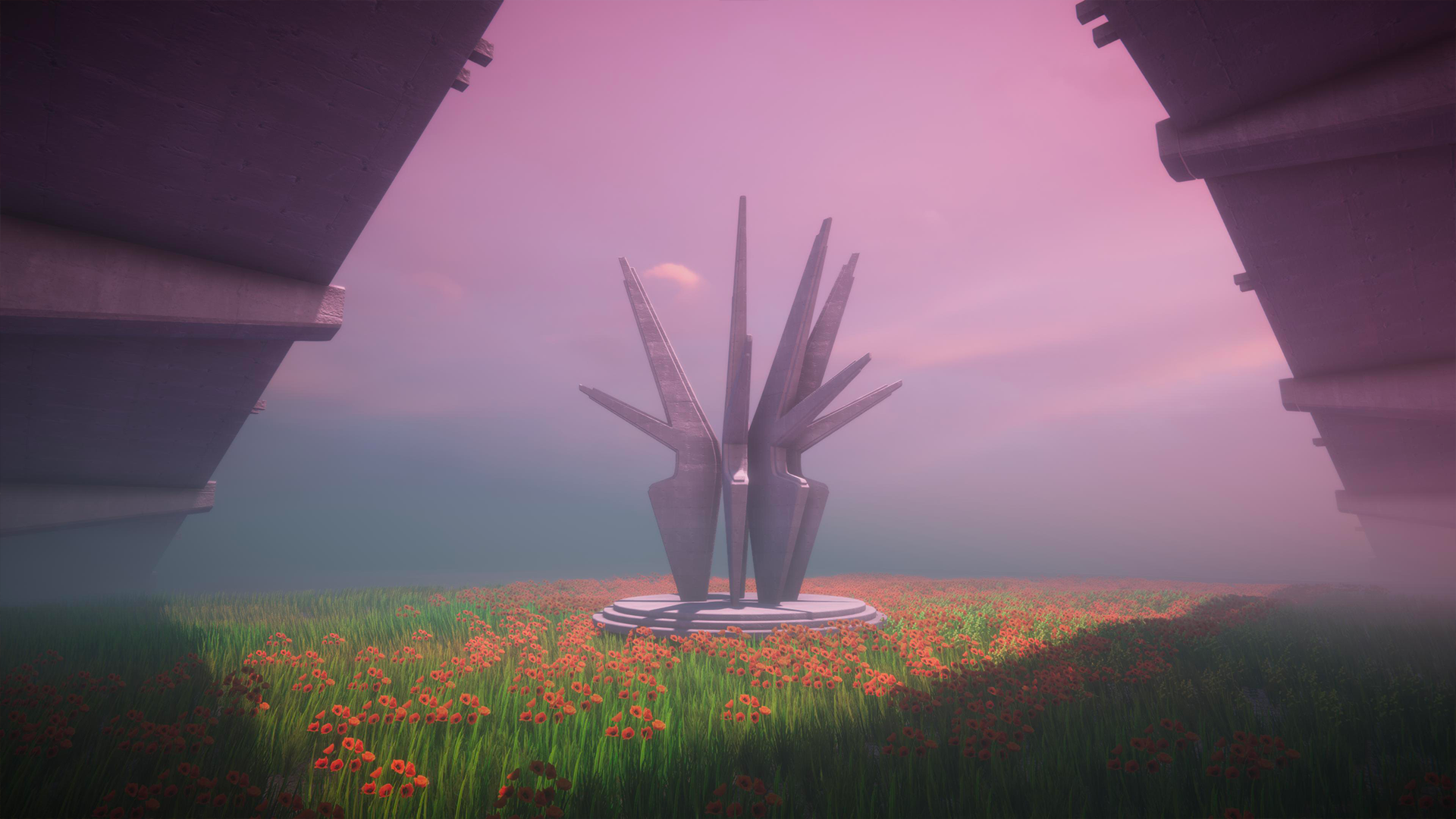

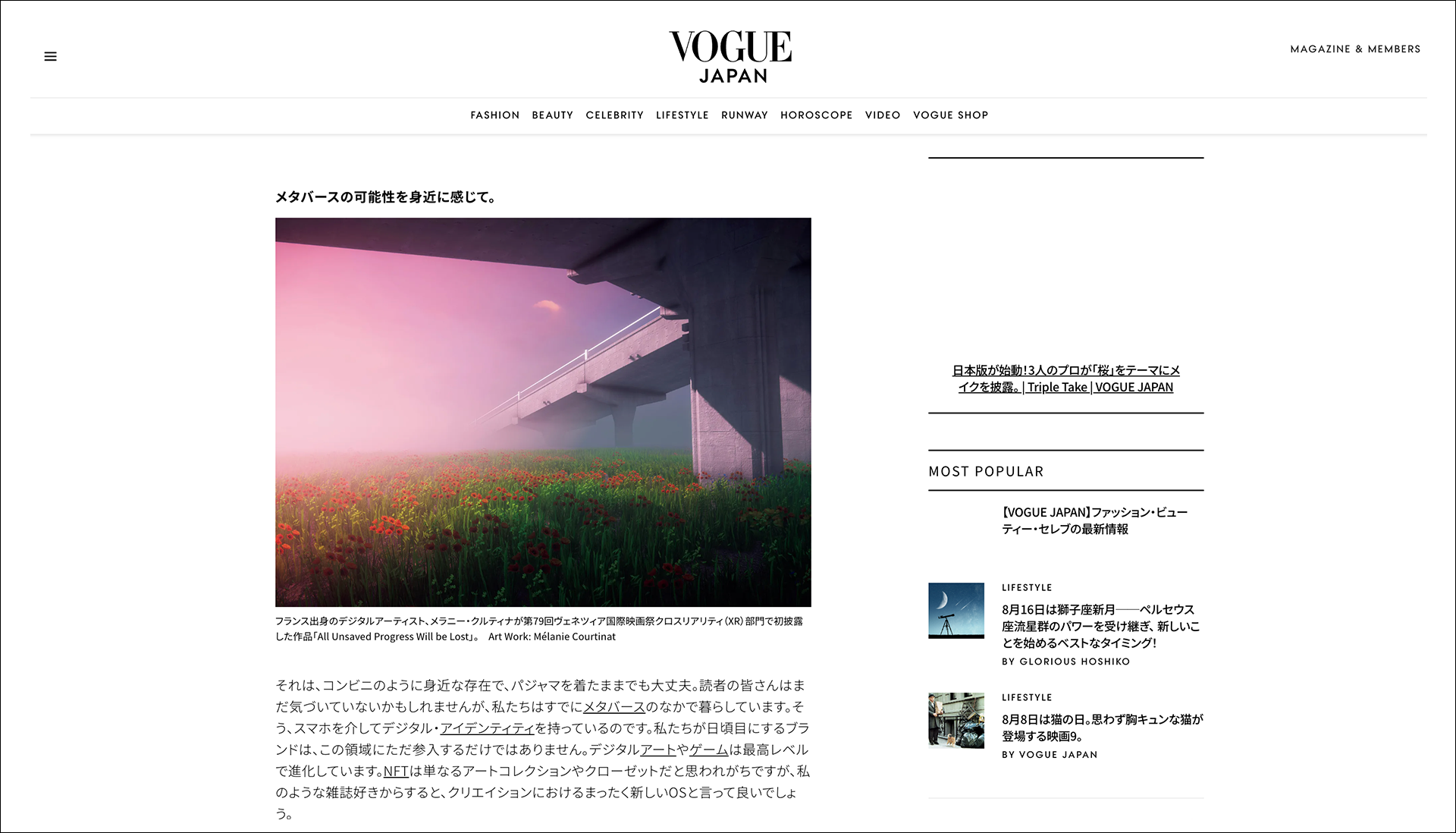
Video game, immersive installation
YEAR 2025
WRITTEN AND DIRECTED BY Mélanie Courtinat
ART DIRECTION Mélanie Courtinat
ARTISTIC & TECHNICAL REALIZATION Odran Jobin
STARRING Tommy Solovyov as the Torero
TORERO COSTUME DESIGN Salomé Poloudenny
TORERO MAKE-UP Cécile Paravina
ORIGINAL MUSIC Victor Morello, Yatoni Roy Cantu
SOUND DESIGN Jean-Baptiste Arthus, Victor Morello
STARRING Tommy Solovyov as the Torero
GRAPHIC DESIGN Régis Mordant
DEVELOPMENT SUPPORT Robin Moncho
COSTUME 3D MODELING SUPPORT Léa Siffredi
Indulto is an interactive piece in three acts. Each act deliberately subverts the codes of traditional video games, and more specifically the mechanics of tutorials and boss fights. Here, interaction serves only to expose the fiction of choice and the fascination with codified violent rituals.
The title itself, indulto, refers to a rare grace in bullfighting, when a bull is spared in recognition of its courage. Yet even this supposed gesture of mercy remains paradoxical: in the end, the sacrifice is inevitable.
In Indulto, the user advances toward an unavoidable confrontation using a game controller. As progression unfolds, the attack combos to be learned become increasingly absurd, unreadable, and unachievable. When the battle finally begins in the center of the arena, the camera looks away. The clash takes place off-screen. And when it returns, only one decision is offered, to kill or to spare, both leading to the same conclusion: the death of the bull, under the thunder of applause of the crowd.
The work seeks to expose the spectacle that manufactures meaning out of violence, to highlight the illusion of free will when everything has already been scripted, and to question the belief that a violent act becomes acceptable if it is beautiful enough, if it is performed with sufficient grace.
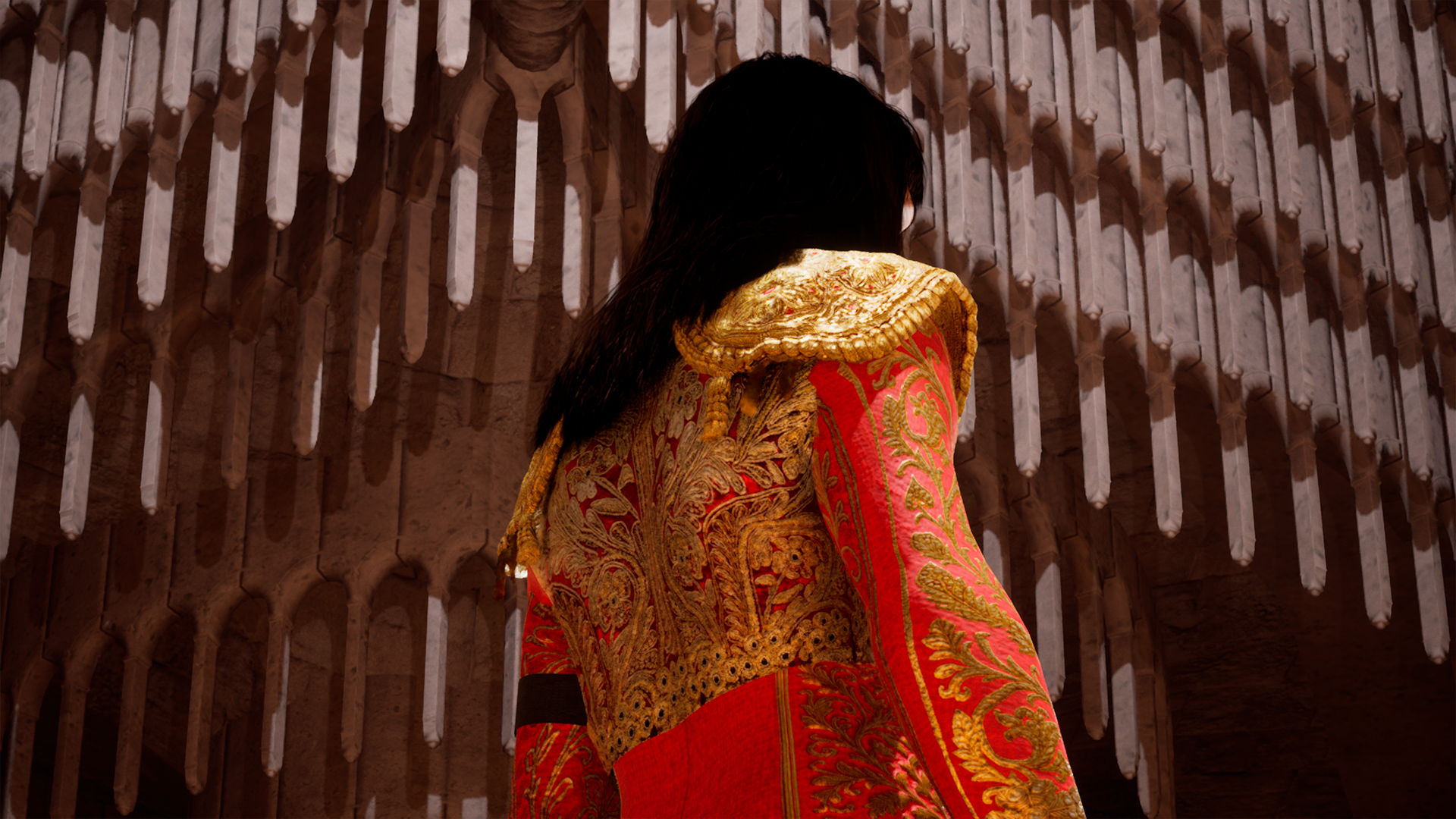
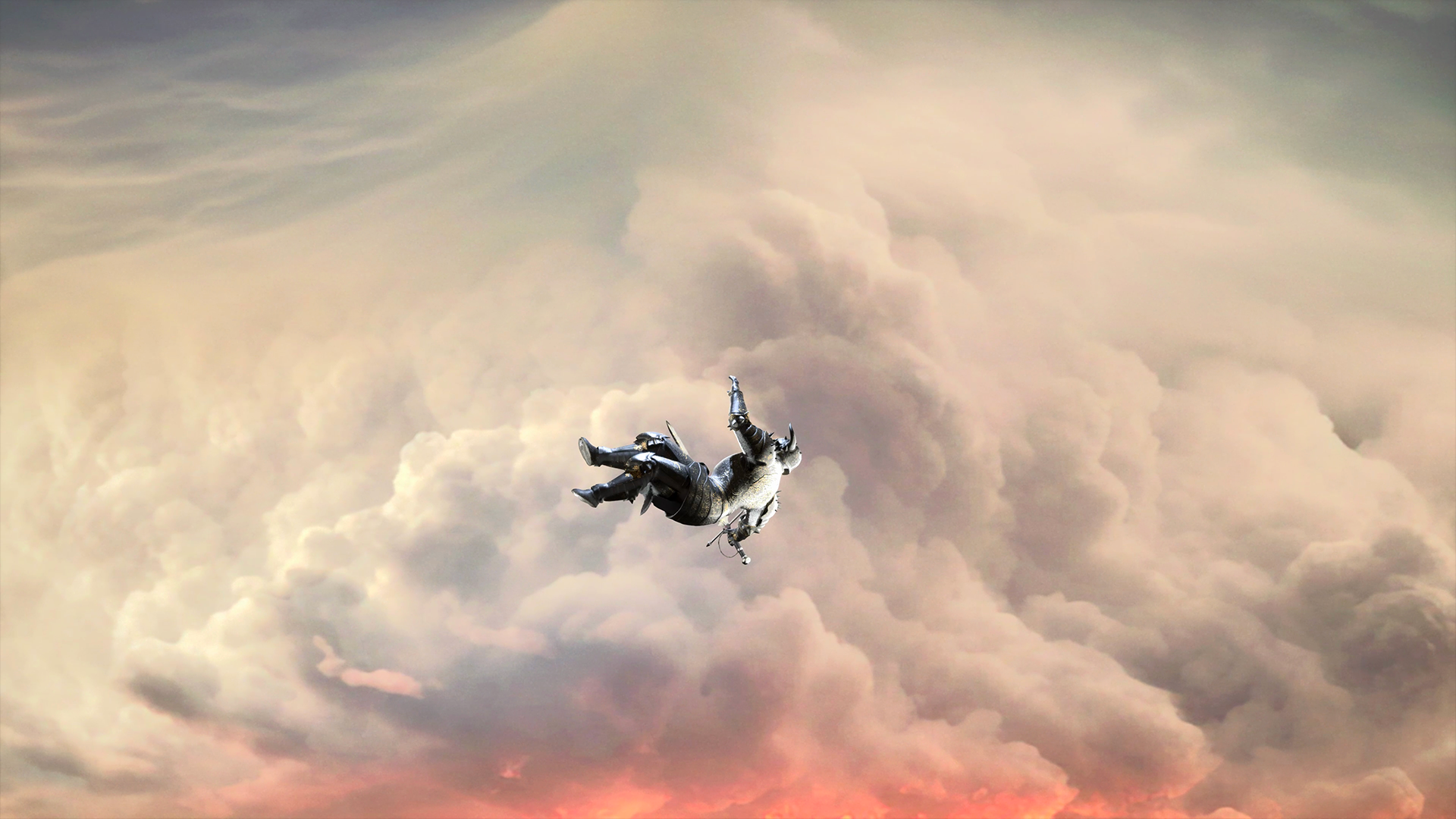
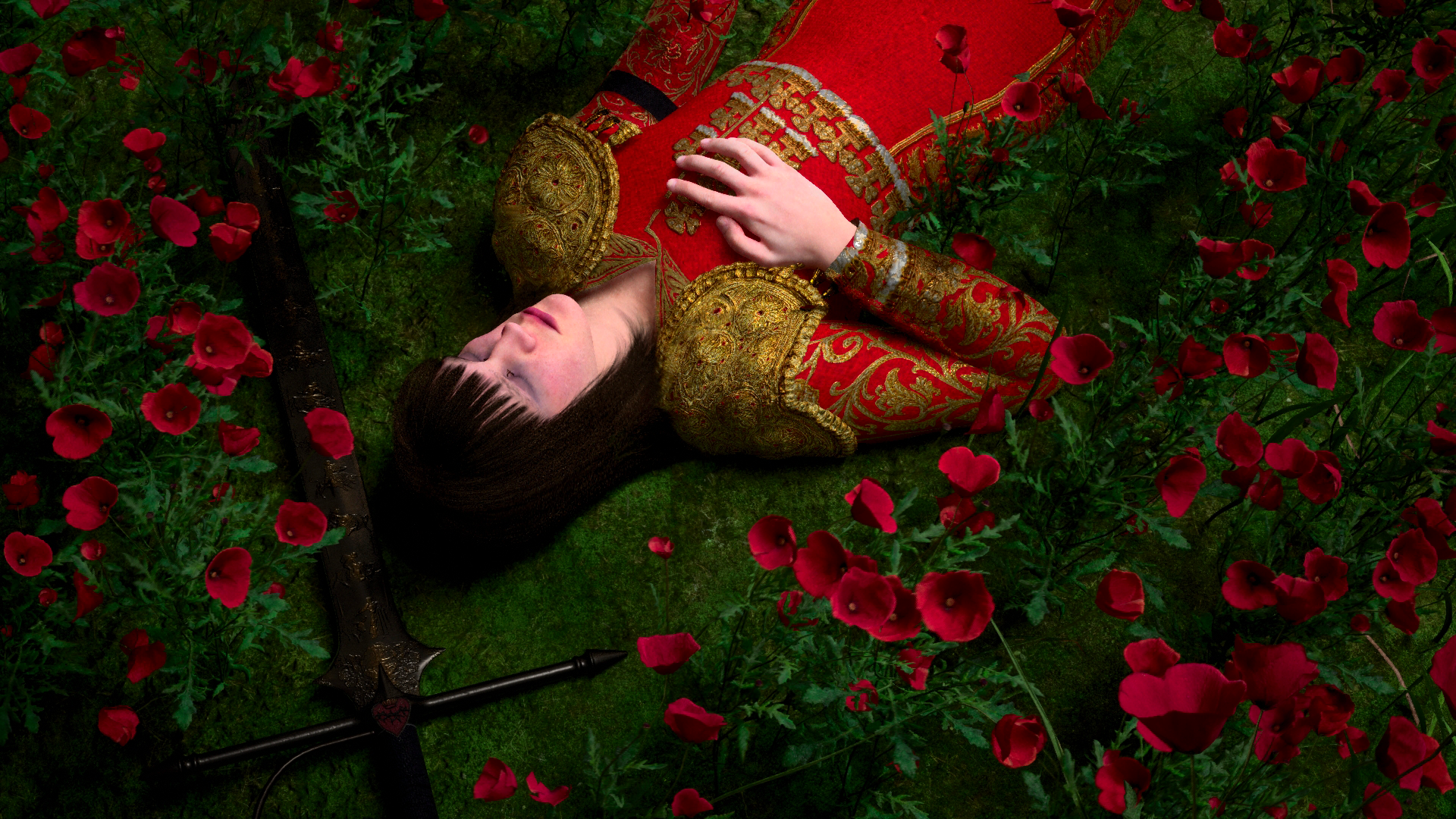
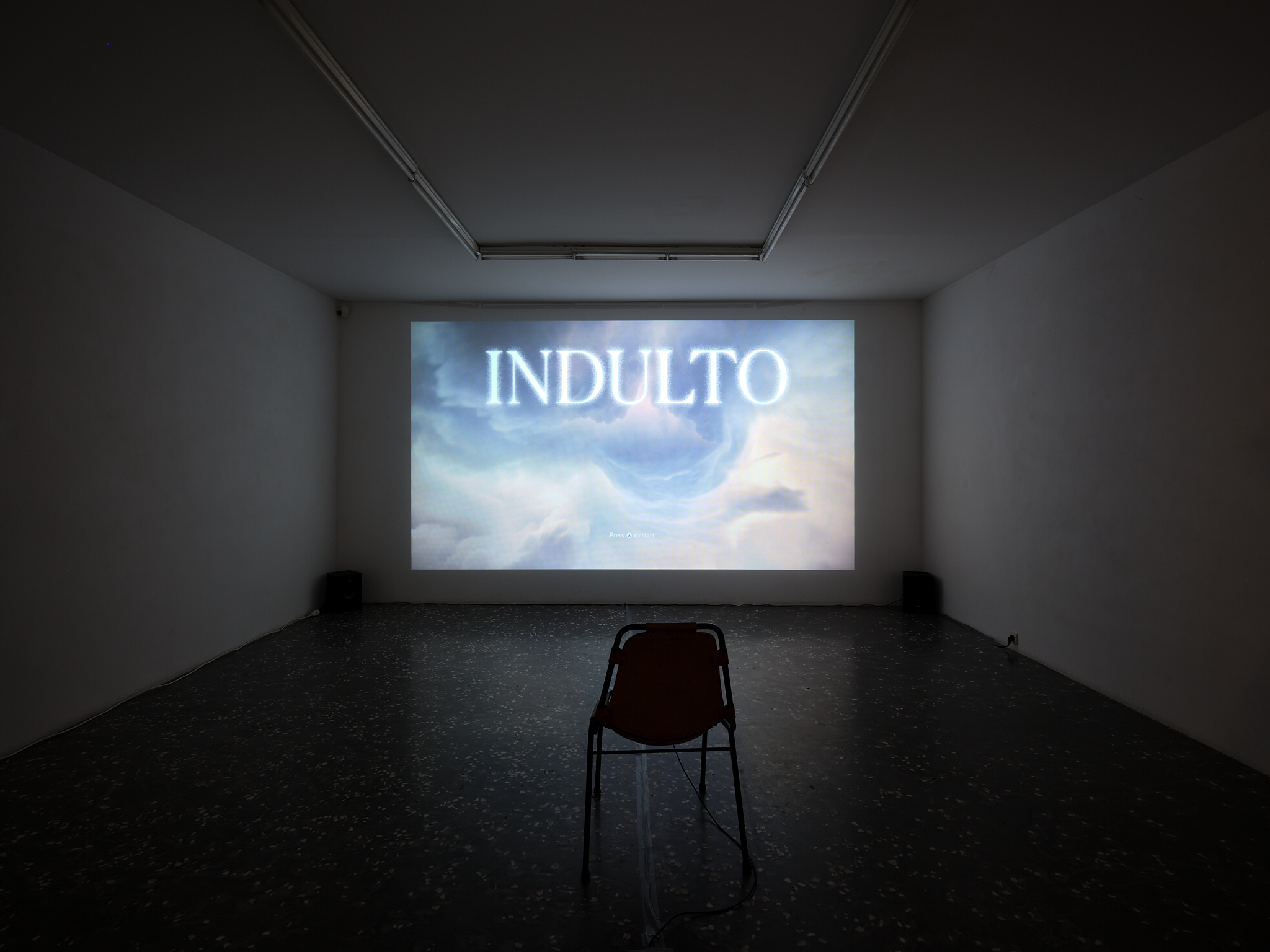



Text by Ingrid Luquet-Gad for Indulto, solo show at New Galerie:
In our post-transcendent world, the deus ex machina has lost all credibility. Those miraculous interventions from above belong to theater, a narrative form tied to sensory experiences unlike our own. Yet in video games, the medium that defines our contemporary moment, fate can still descend from the sky. Mélanie Courtinat’s game Indulto opens with precisely this gesture: a caparisoned bull-God tears through the clouds and crashes to earth. An Edenic clearing of flowers breaks its fall. A sword tumbles loose. Our quest begins, and so does the game.
For her first solo exhibition at New Galerie, the 1993-born artist presents a new game. Its title refers to the Spanish bullfighting term for a pardon granted to the animal at the audience’s request. Players assume the role of a torero, an androgynous, elegant figure fated to confront the fallen beast. What follows is a double education. First, players learn the familiar conventions of the boss fight: Walk, Run, Jump through moss-covered landscapes in search of the legendary sword. But gradually, a second lesson emerges, one drawn from tragic drama itself. Screen by screen, players recognize that their choices are scripted, their agency circumscribed, their free will an illusion.
The game refuses escape from the start. Two buttons appear: “Play” and “Quit.” Only the first functions. The second simply confirms that desertion is impossible. A long corridor stretches toward the arena. Along the way, prompts teach increasingly elaborate attack combinations: Rear finishing blow, Sliding dodge, Fatal combo—escalating toward absurdity until the genre’s smooth mechanics begin to falter. The climactic confrontation itself happens offscreen, replaced by a final choice: “Spare” (X) or “Kill”. Yet this choice is false as the bull dies regardless, killed either by the player or by a crowd that refuses mercy.
This ending revives the “tragic status of the agent” from ancient narrative while exposing gameplay itself as voluntary servitude: the acceptance of rules imposed by others. But Courtinat’s project extends beyond adapting tragic or existentialist themes. Video game agency raises questions entirely its own. Throughout her practice, composed exclusively of immersive digital works, the artist builds worlds and deconstructs conventions in equal measure. Her sustained attention to player position, cinematic language, and interactive systems produces melancholic universes marked by layered temporalities and sudden eruptions of violence or luminosity. The gesture, however, is twofold. In transforming spectators into players, she also critiques the art world’s own protocols—spaces where we perform viewing as much as we enact parasocial relations.
At New Galerie, the game’s presentation is deliberately spare: a chair, a controller, a projection. An unadorned invitation to confront destiny and collective judgment. Downstairs, a video monitor displays the two protagonists frozen in idle stance, which designates the looping animation that plays when no one engages. In The Language of New Media (2001), Lev Manovich identifies navigable space precisely as what is specific to video games. He writes: “In contrast to modern literature, theater and cinema, which are built around psychological tensions between characters and movement in psychological space, these computer games return us to ancient forms of narrative in which the plot is driven by the spatial movement of the main hero [...].”
Thus, Indulto’s deflated heroism makes room for contemplation within a medium still synonymous with action.
Video game, immersive installation + virtual reality
YEAR 2024 for the game / 2025 for the VR
DIRECTION Mélanie Courtinat
DEVELOPMENT Mélanie Courtinat, Odran Jobin, Alpha Rats, Alex Sinh Nguyen
VR DEVELOPMENT Mélanie Courtinat, Nino Filiu, Odran Jobin
MUSIC Inès Chérifi at Færies Records, Yatoni
INTERNATIONAL DISTRIBUTION Diversion
The Siren is a digital exploration that questions the traditional conventions of video games. The project exists in two forms: an installative version played on a screen with a game controller, and an immersive virtual reality experience.
The work investigate the meaning we assign to actions within a game, the motivations behind our playful engagements, and aims to introduce an art exhibition audience to the medium. This inclusive approach is designed to be accessible to everyone, including newcomers, while also providing an additional level of understanding for those already familiarized with video games.
When showcased as an installation the piece features accessible gameplay and contemplative cinematics, offering a rich visual experience for those who prefer to watch. As in the virtual reality version, hands free interactions add a new immersive layer, allowing visitors to engage with the work in a more embodied and intuitive way.
The Siren begins like many games do: you control a heroine clad in shimmering armor and guided by an omniscient narrator, seemingly tasked with rescuing a damsel in distress. But before you can embark on this “main quest,” you’re ordered to complete a minor one: collecting glowing seashells scattered across a quiet beach at dusk. As the game unfolds, the narrator’s presence intensifies, their instructions become more insistent, more authoritarian, pushing the player to obey, to perform. This growing take over invites reflection on our relationship to authority within games, and beyond them. Why do we follow orders? What happens when we stop?
The Siren draws a parallel between the logic of “side quests” (like gathering hundreds of Korok seeds in Breath of the Wild), and the way we fill our real lives with tasks, projects, and goals to distract ourselves from the inevitability of death. Learning a new skill, optimizing routines, falling in love, we keep ourselves busy, hoping that purpose will emerge from repetition. These are little rituals we invent to trick the void.
At its core, The Siren also questions the narrative of romantic salvation, the belief that by “saving the princess,” or by chasing the idea of an “other half” we might finally be whole. That love might protect us from the absurdity of existence, that if we are the main character, there must be a story, and it must lead somewhere. The player’s path is guided through quiet decisions, shaping multiple possible endings. None are final, the “good ending” is tough to find.
The Siren doesn’t ask you to win, it invites you to drift and to wonder what it means to keep going when the quest no longer makes sense.
The Siren was first commissioned by the Pully Art Museum, under the curatorship of Victoria Mühlig.
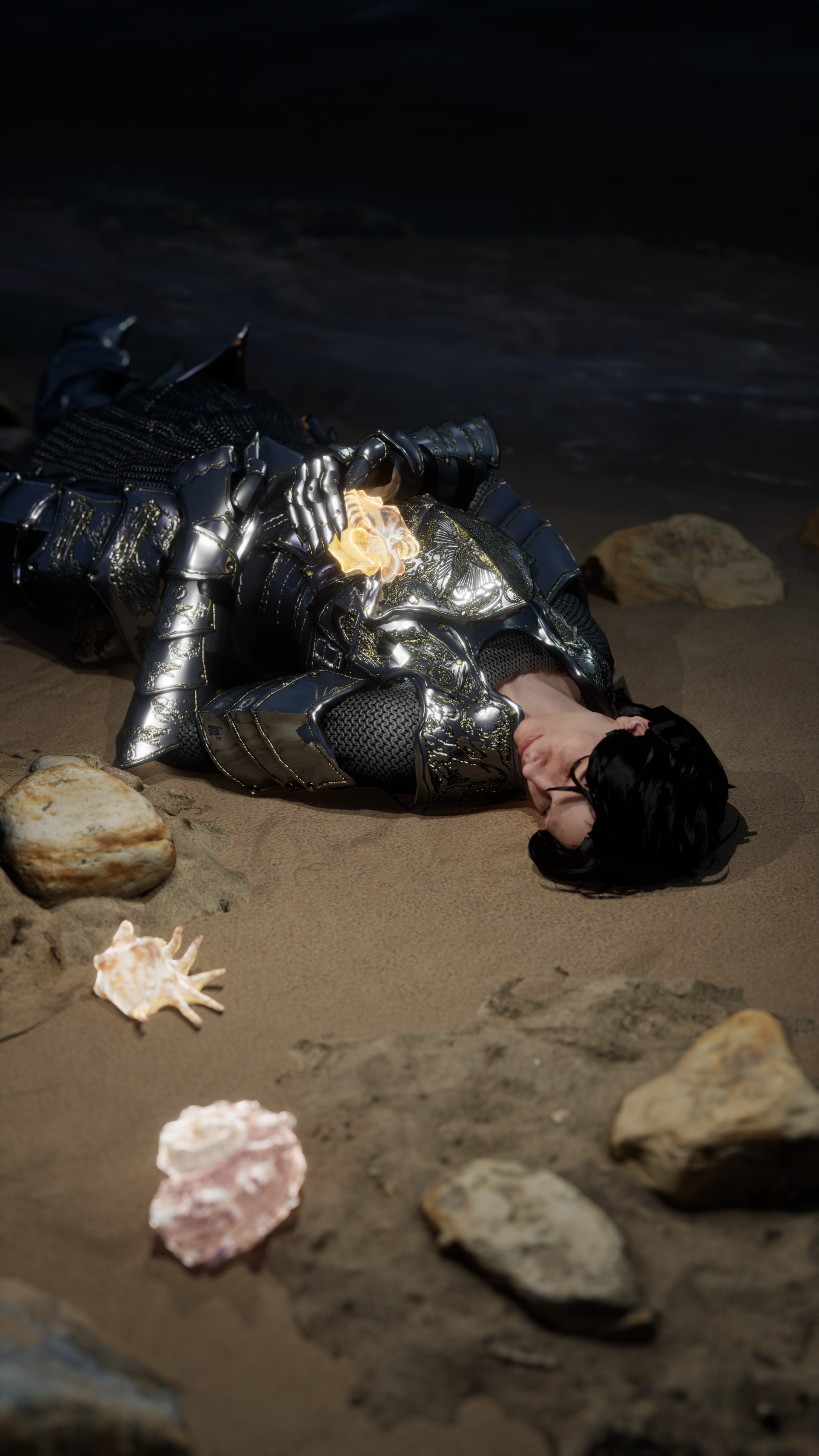

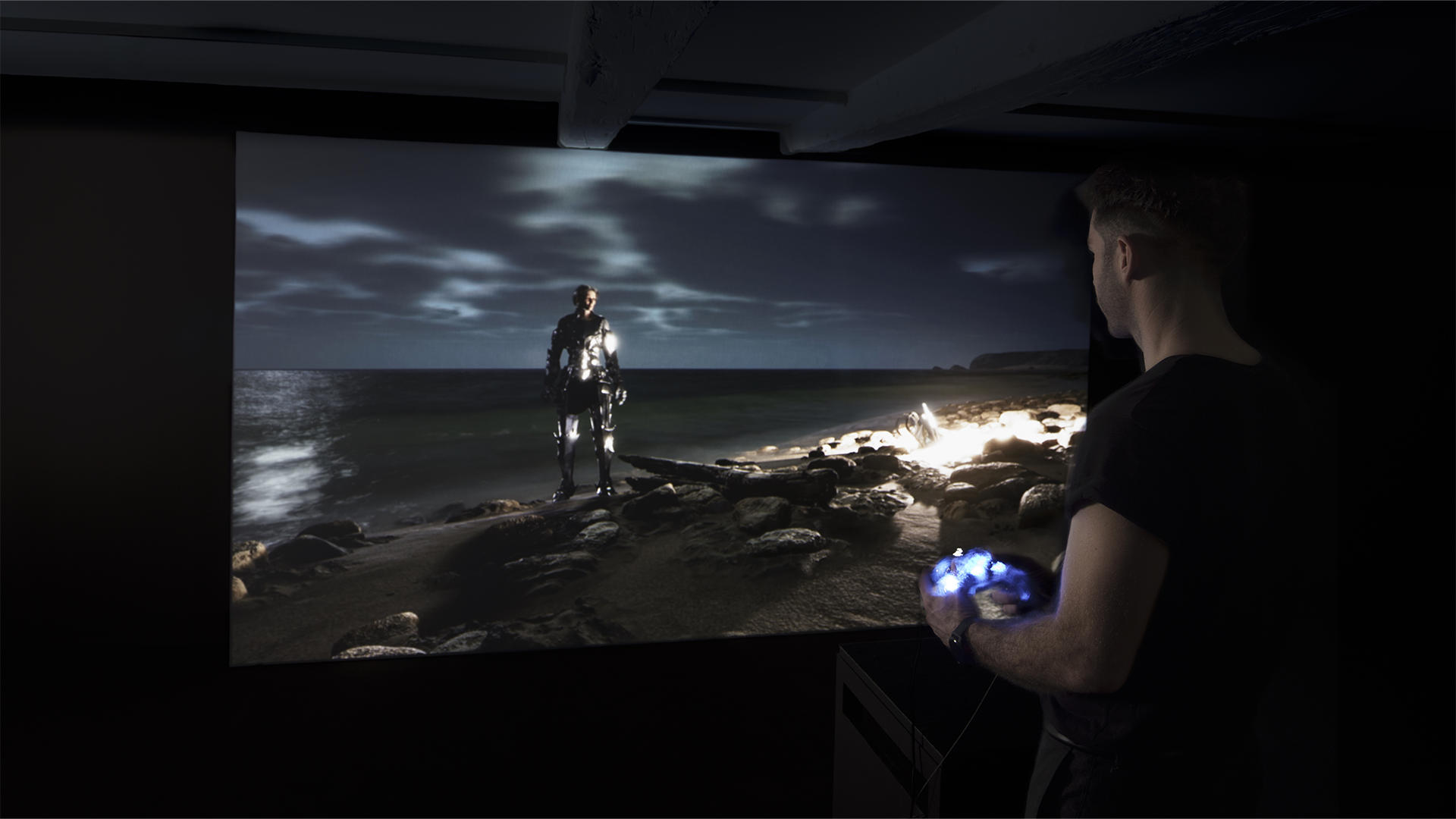

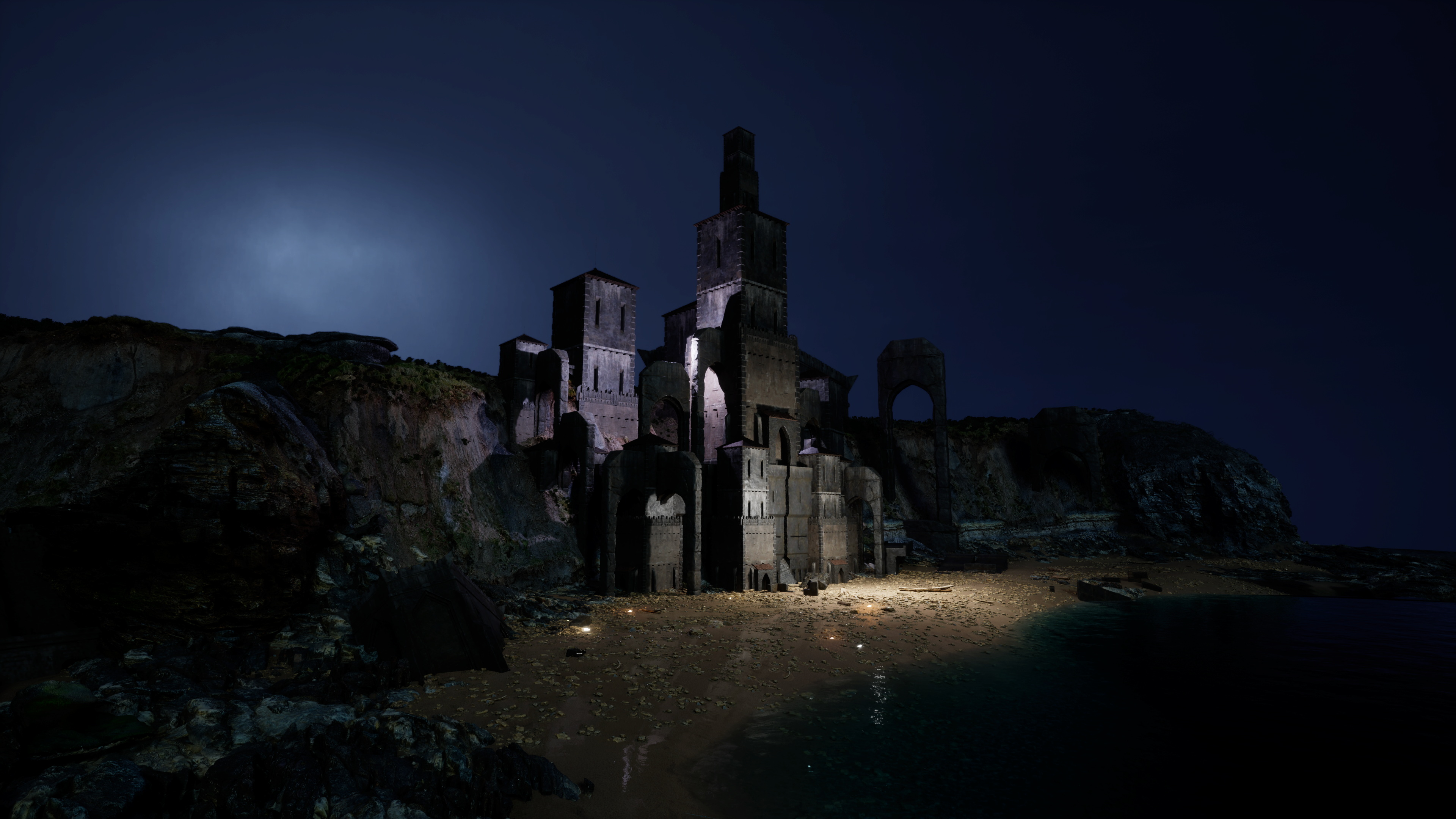
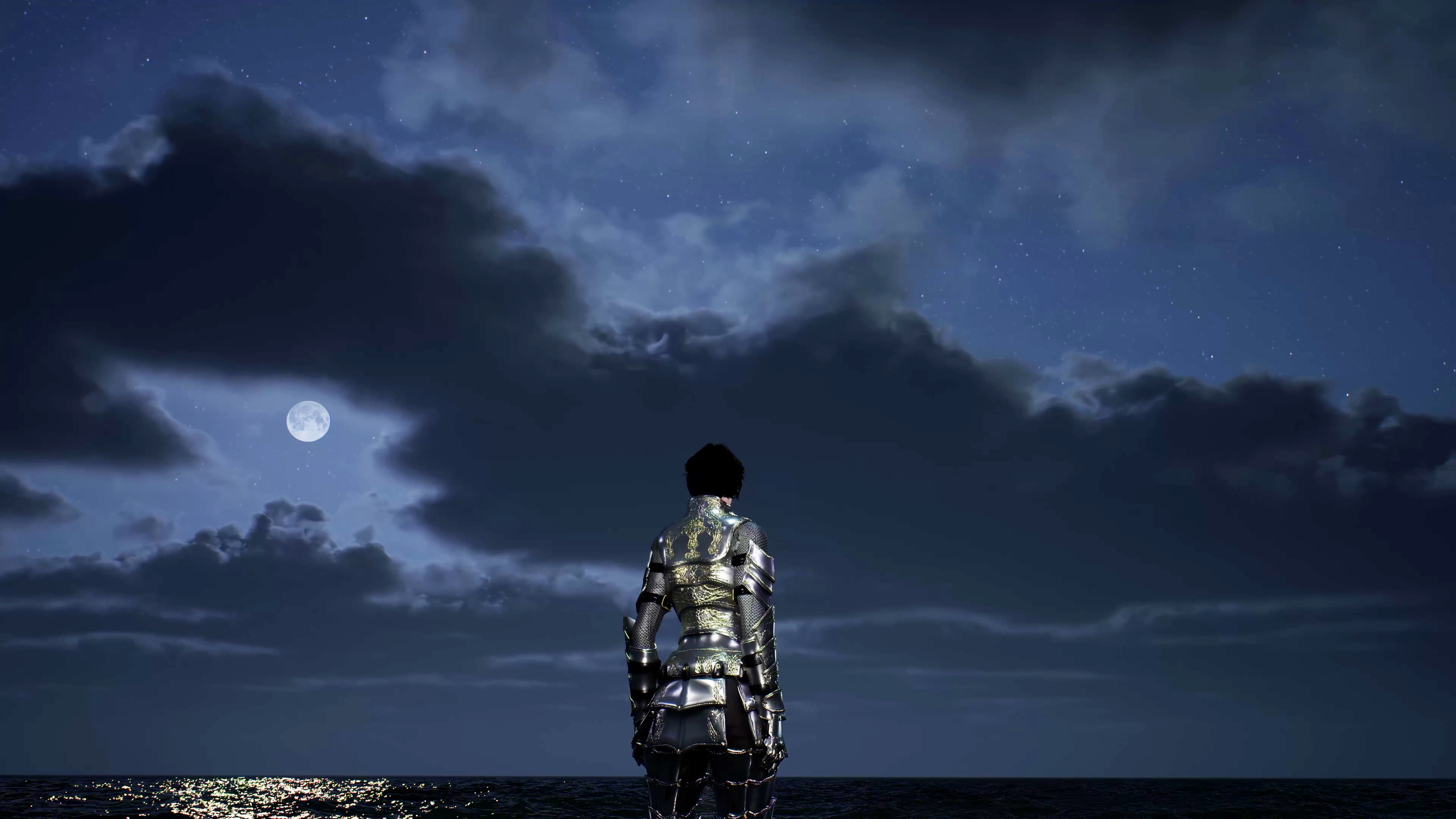

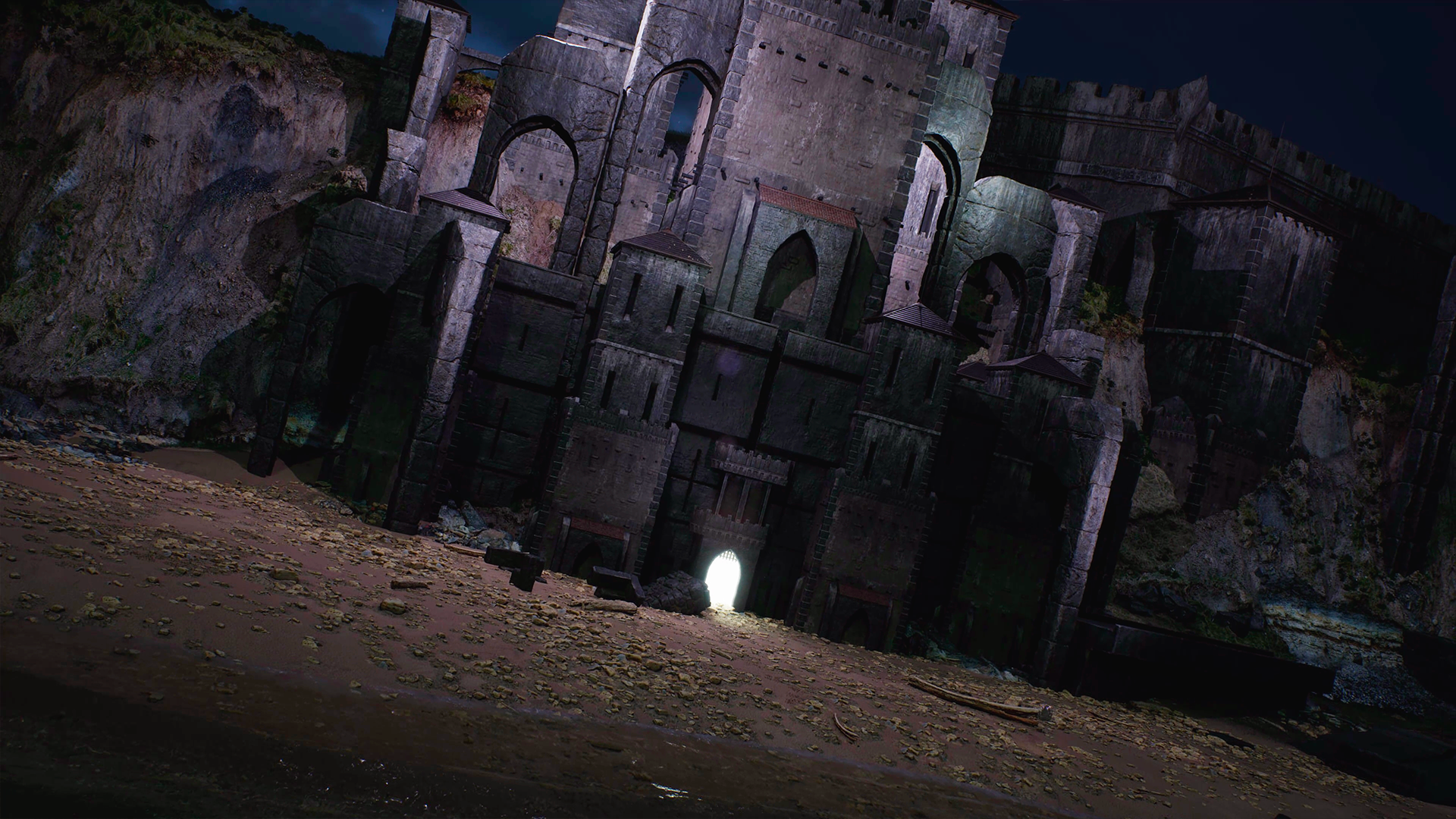
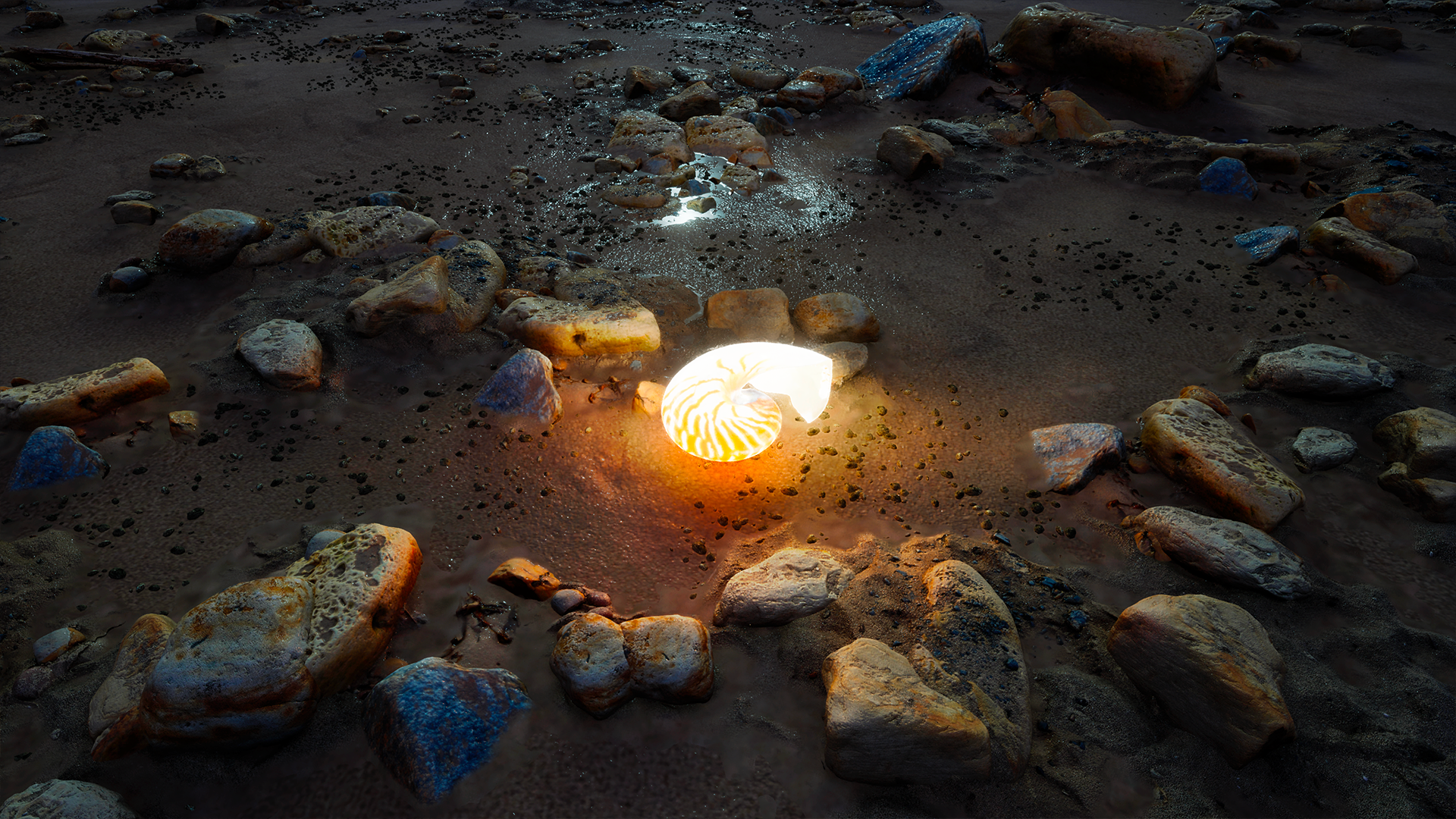
TEN LANDS
Video game, interactive videoclipYEAR 2020
ART DIRECTION, CGI, PRODUCTION Mélanie Courtinat
ORIGINAL MUSIC, SOUND DESIGN Yatoni
Ten Lands is a hybrid format that oscillates between an interactive video clip and a video game. Each level visually illustrates one of the ten ambient music tracks from Yatoni‘s latest album.
Ten Lands opens, in an underlying way, a double reflection that crosses both the video game industry and the music industry. This reflection emerged at a time when music could no longer inhabit public spaces and gatherings were forbidden. Far from clubs and concerts, new spaces and ways of experiencing music began to emerge.
With Ten Lands, the artist seeks to bridge the disciplines of music videos and video games. By merging the interactive format of one and the stakes of the other, Ten Lands is a cross-genre format in which each sound composition unfolds in relation to a specific virtual place. Landscapes and sounds happen and resonate simultaneously.
From then on, Ten Lands raises the issue of spatiality when listening to an album. Here the logics of unfolding the musical titles differ from those already in place, especially on streaming platforms such as Spotify or Soundcloud. Indeed, where one click is enough to start the next track, Ten Lands requires a journey.
By including the notion of space, distance and thus chronology, Ten Lands initiates a new logic of filiation when listening to a music album; close to the one, in particular, that animates the vinyl record. In fact, in the same way that the vinyl record requires listening to music one after the other, this new format requires that steps be taken in order to unroll the musical thread, unlike platforms that follow a logic of "deferred" listening, and the possibility of a disorderly discover. Here, this format pushes and gives you the opportunity to literally go through Yatoni's album.
Furthermore, from another perspective, the artist deliberately chose not to personalize every aspect of the experience. In Ten Lands, a single, enigmatic entity traverses the ten worlds. The avatar envisioned by the artist is defined by its anonymity: its thick, opaque metal armor conceals not only its face but any cues to its gender. Silent by nature, neither its voice nor its gait reveals any hint of its identity, making it impossible to discern distinct features or skin tone. In this way, the protagonist of Ten Lands stands as an inclusive figure, open for anyone to embody.
